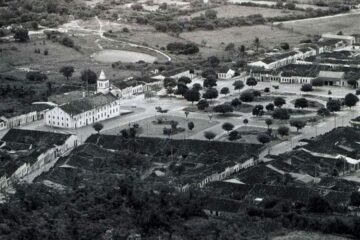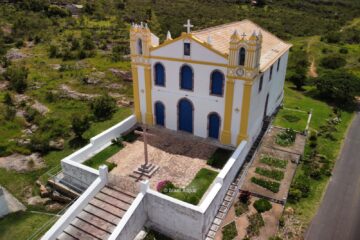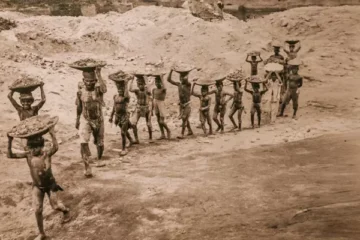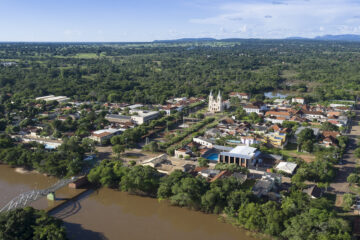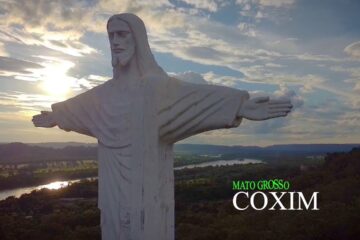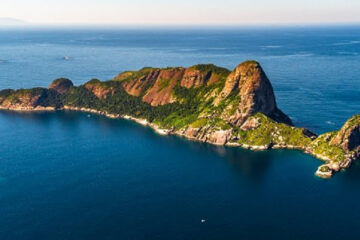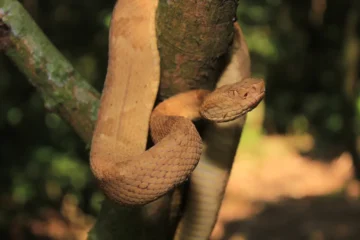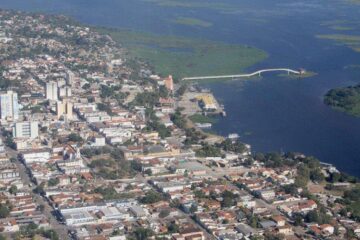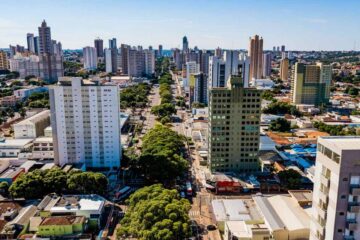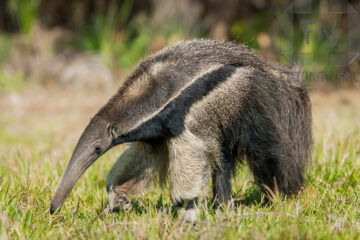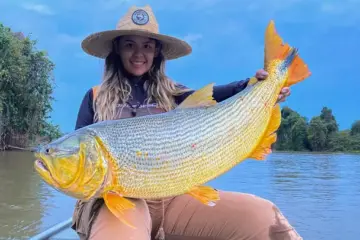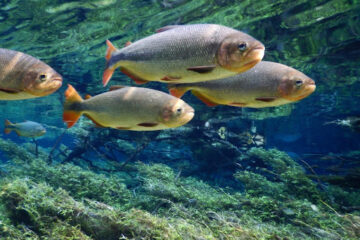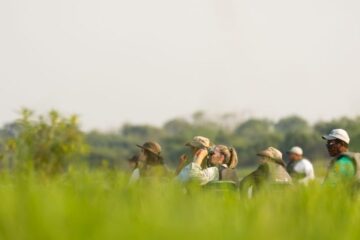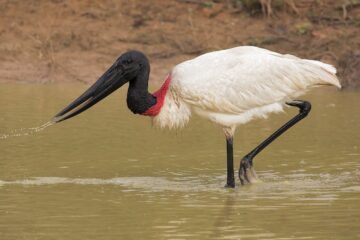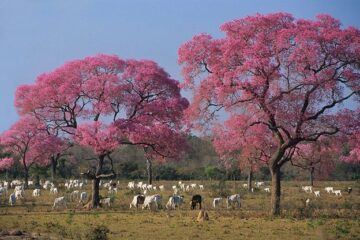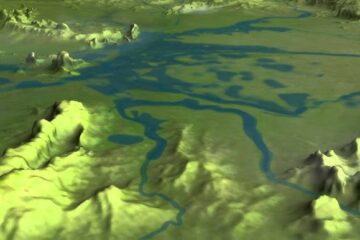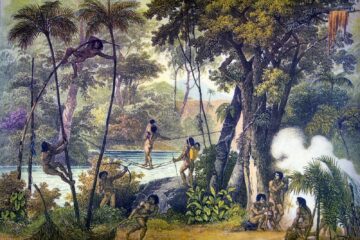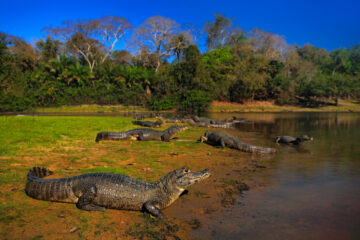Este post também está disponível em:
Português
English
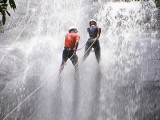
During abseiling, the practitioner descends by vertical ropes into chasms, canyons, waterfalls, free spans and walls.
You can choose between a slower exercise for admiration or a faster exercise for fun. All you have to do is control the slide with the glove and the metal brake.
In addition, the sport offers other options and varieties, classified according to their difficulty and methodology;
The word rappel, in French, means “to call” or “to recover”. Thus being due to the act of pulling the rope at the end of the descent.
See also “Abseiling, bungee-jumping and caving in extreme places in Bahia“
Areas for practicing rappelling in Bahia
1. Cocoa Coast
Nature was really generous with this piece of land in the south of Bahia.
The Cocoa Coast has hundreds of kilometers of beaches, rivers and waterfalls, always surrounded by well-preserved areas of Atlantic Forest.
Lovers of a good rappel will almost always have the company of a beautiful waterfall here, resembling more the cascading, a sport that uses rappelling techniques in this type of environment.
- Salto do Apepique
With 50 meters high, located in the Environmental Protection Area (APA) Lagoa Encantada, in Ilhéus, this beautiful waterfall meets ideal conditions for the practice of zip-lining and especially for a radical rappel descent.
- Cachoeira do Carioca
Also known as Tijuípe or Floriam, this waterfall has a large volume of water and several levels of fall, giving the rappeller good options for the descent. It is located in the municipality of Itacaré, near BA-001.
- Taboquinhas Power Plant Waterfall
It is located inside Fazenda Providência, near Povoado de Taboquinhas, on BA-001. The waterfall is extensive, but it is not so steep, being perfect for beginners.
- Véu de Noiva Waterfall
Considered the largest waterfall in the region, the “Pancadão” – as it is also known – is approximately 40 meters high, representing a more dangerous challenge for the adventurer.
To get there you will travel by boat for 1 hour, up the Rio de Contas and then walk for 40 minutes on a trail that presents some challenges. The access is a bit difficult, but the abseiling is certainly rewarding.
2. Pancada Grande Waterfall
The Pancada Grande Waterfall is one of the biggest attractions of the city of Ituberá, in Bahia.
If for rappelling beginners the ideal size of the descents is between 10 and 20 meters, when it is done in a waterfall there are still other important factors to be taken into account.
For cascading, in addition to the height, the practitioner must also be aware of the volume of water and the composition of the rocks.
Definitely, the Pancada Grande Waterfall, the largest on the Dendê Coast, is not a route suitable for those who are starting out.
The place has already been the stage of the super disputed Ecomotion / Pro, a well-known radical challenge in nature.
The waterfall is about 90 meters high, with three gigantic stone steps, which gave the waterfall the other name of Três Pancadas.
The descent is made difficult by the strong flow of the Rio das Almas and the slippery rocks. Cascading at the site can be done from varying heights, from the three faces of the waterfall, always mixing the adrenaline of the descent, with an exuberant landscape.
3. Abseiling with cascading in Taboquinhas
The Rio Coiudo flows into the bed of the Rio de Contas near the center of Taboquinhas – a district 34 km from the coastal town of Itacaré. At 100 meters from this stretch, a depression forms the beautiful Cachoeira de Noré, 17 meters high.
The waterfall offers excellent conditions for cascading, a sport similar to abseiling, but which always requires a beautiful waterfall as a requirement.
The path to Noré includes a small adventure, as visitors will have to cross the flowing Rio de Contas on board a canoe, and then cross a dense cocoa plantation, on a 15-minute trail.
As the obstacles in this cascading have an intermediate degree of difficulty, beginners, with the support of local instructors, can also participate in this radical adventure.
The place where the waterfall is located is within the area destined for rafting on the Rio de Contas, so a good tip is to take advantage of it to enjoy yet another mind-blowing sport.
4. City of Paulo Afonso
Paulo Afonso is a city in the far north of Bahia, located in the northeastern semi-arid region. Cut by the São Francisco River and the Paulo Afonso Hydroelectric Plant, it offers several natural attractions, especially the São Francisco River canyon.
Knowing the São Francisco River is already a great experience, but interacting with its beauties, moved by the adrenaline of extreme sports is undoubtedly something to be experienced.
Taking advantage of the long canyon that borders the river and, of course, the Dom Pedro II metal bridge, the adventurer can launch himself into mind-blowing challenges in rappelling and also enjoy the thrill of the zip lines set up in the region.
You can also enjoy a relaxing bath in one of the most beautiful stretches of the “Velho Chico”, contemplating the magnitude of the walls, patiently sculpted by time and water.
See the main attractions of rappelling in the region
- Angiquinho
A visit to this place is in itself a journey into the past. The old Angiquinho Power Plant, dating from 1911, will satisfy some curiosities about the history of the place.
Built with the purpose of generating energy for an old local factory and for the pumps that brought water to the old Vila da Pedra, the plant ended its activities only in 1960, when the giant Paulo Afonso Plant had already emerged.
Despite its historical attributes, Angiquinho stands out for the emotion it provides to its visitor. The request is to enjoy a rappel of 40 meters high, or descend a dizzying zip line, with 100 meters long.
- Dom Pedro II Bridge (Metallic Bridge)
An abseiling adventure on the Dom Pedro II Bridge is a real showstopper for any adventurer. Considered radical, it is one of the favorite places in sports programs for rappelling and bungee-jumping scenes.
With a height of 84 meters, this French bridge built in 1958 by the then president Juscelino Kubitschek, joining the states of Alagoas and Bahia, imposes a lot of respect.
For those who take on this challenge, the reward is very generous. The descent is long, allowing the rappeller plenty of time to mix the emotion of the feat with the fascination exerted by the landscape.
5. Caving and Rappelling in the West of Bahia
Located between the municipalities of Catolândia and São Desidério, near Barreiras, a rocky complex – with an extensive complex of caves – has become one of the most sought after areas for the practice of rappelling and caving in all of Bahia.
The caves of Buraco do Inferno and Sumidouro, for offering difficult obstacles, are among the most visited for the sports. The less daring and beginners end up opting for the Paredão Deus Me Livre, a challenge considered easier, about 40 meters high.
In the same region, however, there is an even more sought-after attraction, both for its high degree of difficulty and for the variations that its itinerary offers.
To reach the Catão Cave, the adventurer will first have to overcome a trail of almost 100 meters, made difficult by the steep and stony terrain, mixed with very dense vegetation.
Inside the cave, the caving will be unforgettable, requiring great effort, but offering a unique beauty as a reward.
In addition to being excellent for abseiling, it is through this cave that you can reach one of the most beautiful postcards of the Western region, the Blue Lagoon.
In this cave complex there is still an archaeological site with cave paintings, a lake with a type of quicksand and other smaller caves, such as Sítio Grande.
6. Cascading: descent in waterfalls with abseiling techniques
For those who do not know, this is the name given to the sport specialized in descending waterfalls using abseiling techniques. Well, if the modality needs beautiful waterfalls, in Bahia they are not lacking.
Several of them have already fallen in the taste of adventurers from all over Brazil, making tourism around this sport grow significantly.
The most popular waterfalls are
- Cachoeira do Ferro Doido, in Morro do Chapéu, 90 meters high
- Véu de Noiva and Piancó, both in Jacobina, with 70 and 45 meters, respectively
- Payayayás Waterfall of 45 meters, in Saúde
- Moenda waterfall, with 70 meters, located in Ituaçu
- Rio Brumado Waterfall, with an incredible 300 meters, in Rio de Contas
- Fumaça Waterfall, with 340 meters, the largest and most feared waterfall in the country
- Poço do Diabo, with only 22 meters, considered ideal for beginners
7. Rappelling and Canyoning in Chapada Diamantina
The options for abseiling and canyoning in Chapada Diamantina are wide and varied. The region, known for its natural beauty, is the perfect setting for practicing extreme sports. See some routes that are already traditional:
- Morro do Pai Inácio
The hill, considered a postcard of Chapada, is the biggest challenge for rappellers. Its height of 150 meters imposes a lot of respect, making some give up even before climbing it;
- Poço do Diabo
The abseil has 22 meters of descent and ends in a splendid lake, 80 meters long and 50 wide. Ideal for those who are starting in the sport because it has a moderate height, the Devil’s Well is located near the Mucugezinho River.
- Gruta do Lapão
The negative rappel begins in a 4-meter long by 2-meter wide crevice in the ceiling of the cave. The 50 meters of descent are intense and arouse many emotions in the adventurer.
- Capivari Waterfall
Located 20 km from Lençóis, the waterfall is one of the most popular spots in the entire Chapada for canyoning. The entire program, which begins with a trail from the city, has an estimated duration of 3 days and 2 nights in camp, including a spectacular rappel, 37 meters high.
- Fumaça Waterfall
Radical to the extreme, it is the perfect stage for those even more daring. The trail there is 48 km, done in 4 days and 3 nights, including in its itinerary a delicious descent of zip line, in addition to caving and cascading, performed in practically all waterfalls and caves.
At Fumaça, cascading represents the biggest and riskiest challenge in the entire region. With 420 meters, from the top to the well, the formation is considered the highest in Brazil, making its descent delicate, due to the very strong winds. It is located in the municipality of Palmeiras, in Chapada Diamantina.
- Gruta dos Brejões
In the heart of the Chapada Diamantina, the city of Morro do Chapéu has numerous options for practicing extreme sports, such as trekking, mountain-biking and a special abseiling, in the Gruta dos Brejões.
The adventure is complete, including an overnight stay in the cave itself, short walks through the region and the great challenge in the cave. Its monumental entrance is 138 meters high and is considered the largest in Brazil. Beginners should only contemplate it, as abseiling is difficult and requires great experience.
8. Abseiling spots in Salvador and the Recôncavo
With beauties known all over the world, Salvador is also one of the Brazilian cities with the most rugged relief. The geological depressions have made the city a favorable place for rappelling, with many walls, bridges and viaducts.
Abseiling in buildings can be used as training for adventures in nature. Salvador, however, presents some challenges that are totally inadvisable for beginners in the activity, due to their degree of difficulty.
In the city, the main points for practicing the sport are: the Vitória Marina Hotel building, the Itapoan TV and Bahia Convention Center towers, and one of its best-known postcards, the Lacerda Elevator.
The latter gives the rappeller the thrill of being 72 meters high, enjoying a classic and exuberant view of the Bay of All Saints.
Very close to Salvador, in the city of Santo Amaro da Purificação, located in the Recôncavo baiano, the adventurer has a natural challenge to overcome.
The Mãe D’Água Waterfall, with 50 meters of drop, will raise the feeling of freedom to the heights, providing, also, a delicious bath.
9. The Radical Charms of Santa Luzia
The youngest city on the Cocoa Coast, Santa Luzia is home to many natural beauties, including rivers, waterfalls, lagoons, caves and some rock walls.
In the past, the area that comprises the municipality was the largest diamond exploration center in southern Bahia.
With some places that are very reminiscent of Chapada Diamantina, Santa Luzia has become a very busy center for those who seek extreme sports. The adepts of rappelling, caving and cascading have some alternatives for their adventures.
For rappelers, the great thing is to face the 40 meters of descent in the Mirante das Três Marias or in the Gruta do Lapão Velho, outside and inside the cave, with varying heights.
- Grotto of Lapão Velho
It is an almost impossible mission to stop caving in this cave. With a high level of difficulty, the adventure consists, first, of crossing the almost 500 meters that separate its two entrances, forming a very steep descent.
From there there are still crossings of chasms and submerged galleries, to finally climb to the top of the “Apaga Vela” and reach the main hall. The Lapão Complex has a total of 20 caves that can be extensively explored.
Bahia.ws is the largest tourism and travel guide for Bahia and Salvador.
